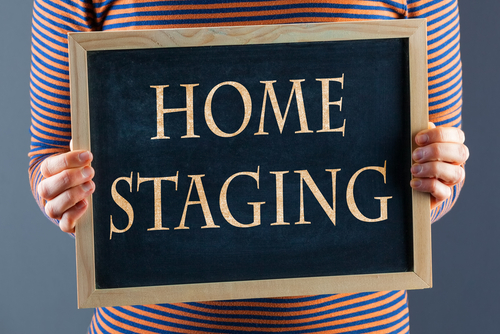
Most people have heard of staging homes for sale – but what about homes for rent? Staging a rental property is a step often overlooked by landlords. Whether it is cost-prohibitive or just viewed as unnecessary, most property owners think their home will attract enough quality applicants without it. However, keep in mind that renters are looking for a home, not just an empty space. Therefore, sparking their imagination with some strategic furnishings may be worth the effort. Continue reading below as we examine different options to stage a rental property that pays off.
Why Staging a Rental Appeals to Renters?
A blank slate for renters has its appeal, but prospective tenants also like to see how their new home could look. When you stage a rental property, applicants can see how their furniture may fit within the given space. That said, how you stage a rental property is just as much a science as it is an art form.
Professional stagers use colors and pieces that provide sweeping appeal to almost anyone. However, what pieces they do use are just as important as what they do not use. For example, leaving strategic empty space allows the tenant to envision adding their own personal touches.
Simply put, when you stage a rental property, it triggers an emotional response. These emotions help prospective renters feel connected to the space and may lead to more quality applications.
How to Prepare to Stage a Rental Property
Before hiring a local staging professional, landlords should evaluate their own rental property. Take a look at the tips below that can help you prepare and decide if staging is right for you.
- Clean, Clean, Clean – To look its best, staged or not, a rental property must be spotless. Ideally, hire a professional cleaning crew to give the property a thorough deep clean. Even the smallest dirt or grime can distract from your listing photos. In addition to having the home appear visually clean, ensure the home remains fresh and deodorized.
- Simple Things Equal Big Impact – Some simple upgrades can make a big impact on a renter’s first impression. So, consider swapping out a dated light fixture, change out the cabinet pulls, or replace the shower curtains. A small investment here can pay off exponentially when attracting new tenants.
- Find the Flaws – Every rental home will inevitably have some flaws. Therefore, the key is to identify and address them before staging the home. Generally, this is already part of the turnover process but look for anything that needs repair or replacement.
7 Tips to Expertly Stage a Rental Property
Staging a rental offers a great opportunity to showcase the home’s potential and draw in more prospective tenants. Especially in today’s competitive rental market, owners need every advantage they can get. So, read on for tips to stage a rental property and attract positive results.
- Curb Appeal Matters
- Make a Lasting Impression
- Highlight the Home’s Character
- Keep it Neutral
- Don’t Over Personalize
- Give Rooms an Identity
- Let There Be Light – Lots of Light
 Curb Appeal Matters
Curb Appeal Matters
The first thing prospective tenants see is the exterior of your rental. Therefore, landlords need to give the outside the proper attention it deserves. So, trim back overgrown trees and shrubbery, and remove debris from the yard. Another cost-effective way to boost curb appeal is by power washing exterior siding or walkways to remove dirt and algae. Color is an important factor when making a good first impression. That said, spruce up your landscaping with some colorful seasonal flowers or shrubs.
Pro Tip: Yellow flowers are popular in entryways because they add a welcome warmth that attracts prospective renters. For more tips on adding curb appeal to your rental, check out our blog.
Make a Lasting Impression
As soon as an applicant walks into your rental, what they see can make or break their decision to rent. So, part of a successful staging is creating an entrance that grabs their attention. The ideal entrance blends both form and function, adding some hooks for coats, a place for shoes, and a nice rug.
Highlight the Home’s Character
Maybe your rental property has a large fireplace, gorgeous hardwood floors, or bonus built-in storage – whatever it may be, highlight it! These details are what sets your property apart from the competition, so make these attributes something the renter will remember. Now that Summer is here, think about outdoor entertaining space. Do you have a private patio or great backyard deck? Add a few pieces of furniture or an outdoor dining set, allowing your prospects to envision fun times with family and friends.
 Keep it Neutral
Keep it Neutral
A rental property is not the place to showcase bold or overly complex color schemes. Ideally, a rental provides a blank slate for renters to add their own style. However, neutral does not mean everything has to be hospital white. Instead, use soft neutral hues in gray, beige, yellow, or green. These colors create a warm, relaxing, and inviting atmosphere that is sure to appeal to a wide variety of renters. Of course, your target renter and the local neighborhood will also play a role in color and design choice. For example, in a trendy artistic neighborhood, you may be able to get away with a bolder choice. That said, always take a look at the competition and be careful not to go overboard.
Pro Tip: Wondering what colors are best for your rental? Check out our blog for 2021’s hottest color trends.
Don’t Over Personalize
Just as we mentioned with the color scheme above, a rental should be a blank slate. So, this translates to décor as well as color choice. When you stage a rental property, avoid adding lots of personal items that can distract renters from the true attributes of the space. Take a look at the list of items below that landlords should remove from the home before taking photos or providing tours –
- Personal or Family Photos
- Toys or Children’s Items
- Religious or Political Objects
- Pet Related Items
- Framed Certificates
- Refrigerator Magnets
Along with personally identifying items, it is important to remove any unnecessary items that can create clutter. Remember, tenants need to be able to envision themselves and their own belongings in the home. Therefore, when your personal items are everywhere, it does not allow tenants to connect with the space.
 Give Rooms an Identity
Give Rooms an Identity
When you stage a rental property, it is vital to give every room an easily identifiable purpose. In general, this is straightforward and includes furniture for spaces such as the living room, dining space, and bedroom. However, bonus rooms offer an opportunity. For example, the COVID pandemic has changed the work routine of many Americans, and a home office is no longer just a nice feature; it is a necessity for many. So, consider setting up a spare bedroom, den, or corner of another larger room as a separate work area.
In addition, using furniture designed for the purpose of the space is a great way to show tenants the room’s potential. The key here is to choose pieces carefully and do not overdo it.
Let There Be Light – Lots of Light
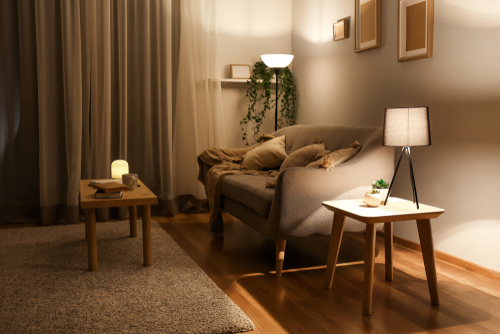 When it comes to warm and inviting, few things can beat natural light. But, if your rental lacks large windows, adding strategic layered light throughout can achieve the same effect. Check out these tips below to let the right light into each of the property’s spaces –
When it comes to warm and inviting, few things can beat natural light. But, if your rental lacks large windows, adding strategic layered light throughout can achieve the same effect. Check out these tips below to let the right light into each of the property’s spaces –
- Maximize Natural Light – Natural light is the best, so if you have it, flaunt it. Choose sheer curtain panels that do not hide the light but instead diffuse it. Furthermore, make sure windows are clean, so they allow maximum light to enter without distracting spots or grime.
- Layer Light Sources – Overhead lighting is great, but it can be harsh. Therefore, use floor lamps, table lamps, or wall sconces to create a softer, more relaxing feeling.
- Set the Mood – Nowadays, lightbulbs come in a variety of shades and brightness levels. So, for a cohesive look throughout the home, choose matching light values in each space based on its use. For example, bedrooms are better with a lower temperature bulb which provides a soft candlelight effect. In contrast, bathrooms and kitchens are more suited to brighter, higher temperature bulbs that mimic daylight.
The Benefits of Staging Your Rental
When you choose to stage a rental, it allows renters to see the full potential of the space your property offers. However, that is not the only benefit that can make this investment worthwhile. Check out some of the benefits of staging below –
- The property is more inviting
- Staging shows the tenant you care about properly maintaining your rental
- You can use staging to stand out amongst the local competition
- Marketing photos look better with some strategic staging
- Better marketing can mean lower vacancy time and more qualified leads
Ultimately, staging a rental can make finding quality tenants and charging a higher rental rate easier.
When Staging Your Rental Is Not Worth It
 Staging a rental does require a financial commitment, and it is not worth it for every situation. When you stage a rental property, it allows your home to stand out from the crowd, which is useful in a slow market. However, if the rental market in your location is booming, staging may prove unnecessary.
Staging a rental does require a financial commitment, and it is not worth it for every situation. When you stage a rental property, it allows your home to stand out from the crowd, which is useful in a slow market. However, if the rental market in your location is booming, staging may prove unnecessary.
Before spending the money to stage a rental property, it is vital to research and understand the local market. For example, lower rent areas are unlikely to benefit from staging efforts. Instead, that money is better spent on useful upgrades such as repainting or replacing dated appliances.
That said, there are staging options to suit a range of budgets. Consider researching the options below to see what works best for your rental –
- Traditional Staging – This involves a professional service designing a concept and bringing in furniture items to highlight the areas of your property. It is a great way to make marketing photos more appealing and encourage in-person tours by showing the space’s full potential. Costs can vary widely depending on the size of the property but typically range from several hundred dollars to $5,000 for a luxury single-family home.
- Virtual Staging – Virtual staging is a more cost-effective and less invasive alternative to traditional methods. Instead of bringing in physical furnishings, designers use computer technology to envision the space with furniture. That said, more than 90% of renters begin their search online, so virtual staging allows you to have professional quality photos without the cost of bringing in real furniture. Typically, these services range from $39 to $199 per room, depending on size and the company you choose.
Market Your Property with Bay Property Management Group
Whether you choose to stage a rental property or not, effective marketing is vital to your success. The experienced leasing and marketing team at Bay Property Management Group can help owners get your listing where prospects can see it. It all starts with quality photos and a dynamic marketing description. From there, your dedicated leasing agent posts the listing to popular sites as well as local pages to maximize valuable exposure.
Furthermore, the local property managers at BMG continue working long after a tenant moves in to coordinate rent collection, maintenance, and daily operations. So, if you want to limit vacancy time and give your rental a competitive edge, give us a call today.

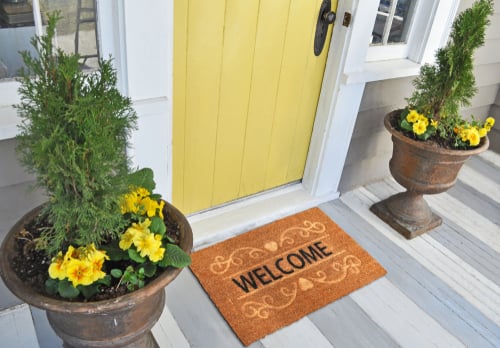 Curb Appeal Matters
Curb Appeal Matters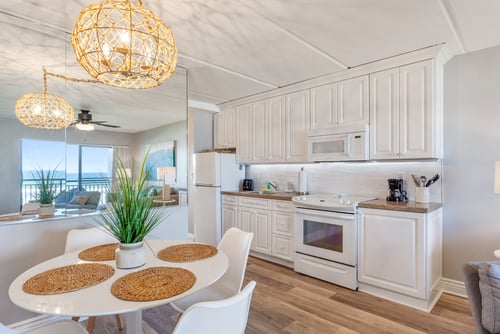 Keep it Neutral
Keep it Neutral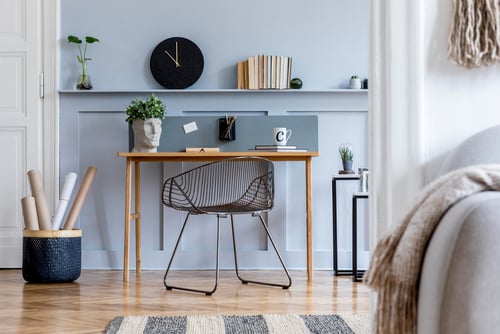 Give Rooms an Identity
Give Rooms an Identity